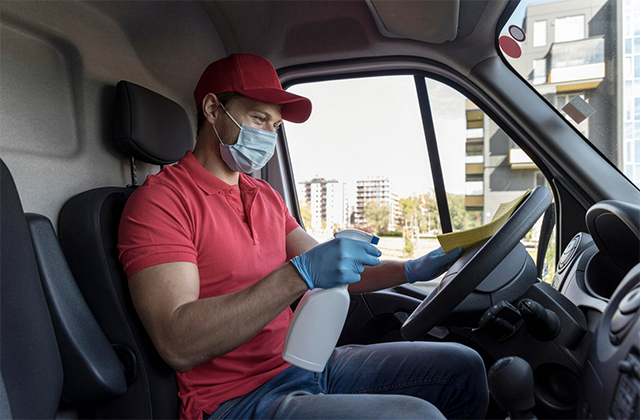Introduction
Some people think that leather seats are just like a sofa and you can’t clean them.
In fact, it is not the case at all.
Leather seats are just as susceptible to dirt and grime as a typical sofa, so you should be cleaning your seats every now and again! But with regards to car leather you can use a car leather cleaner to protect it.
How often do you clean your car interior? Do you ever think about it? I’m guessing no.
The first thing you need to explore is a spray bottle and some warm water and soap.
The first thing you need to explore is a spray bottle and some warm water and soap. This will allow you to get the soapy water onto the leather without overdoing it, as well as make sure that no residue from cleaning settles in between cracks of the seat.
Before starting any cleaning process, make sure all seats are clean and dry! Make use of a vacuum cleaner if necessary, but don’t forget about those crevices behind cushions or underneath seats.
Create a mixture of one part white vinegar and one part water in a spray bottle.
- Create a mixture of one part white vinegar and one part water in a spray bottle. White vinegar is an inexpensive cleaning product that can be used on leather seats, as well as the dashboard, door panels, and other parts of your car.
- Spray the mixture onto your leather seats, using enough to saturate the material but not so much that it runs over when you’re wiping it off.
- Use either paper towels or microfiber cloths to wipe down your leather seat coverings; we recommend microfiber because they’re safe for use on delicate surfaces like leather and won’t leave any residue behind.
Mix ¼ cup olive oil with ¼ cup white vinegar.
In a large mixing bowl, combine ¼ cup olive oil with ¼ cup white vinegar. You can use any kind of white vinegar, but I would recommend using organic or unrefined if you have the option. This mixture will clean the leather while also leaving it soft and supple in just a few minutes!
Dip a clean cloth or sponge into the soapy water.
- Dip a clean cloth or sponge into the soapy water.
- Hold it at a slight angle and gently scrub.
- Rinse with cool water, then dry by blotting with another dry towel (and use a different towel for every new section).
You will enjoy driving in your car even more after you follow these steps!
If you follow these steps, your car will look and feel even better than it did before. You’ll be proud to drive around town and show off the clean interior of your car. You may even enjoy driving more than you used to!
The steps are really easy to remember because they’re simple: clean and protect. Clean out all the dirt in the car, then protect it so that dirt doesn’t end up back on the seats so quickly (and besides, why would we want that?).
Conclusion
The average cost of vehicle maintenance is around $800 per year. And this figure is just for regular car maintenance, which includes simple things like replacing wiper blades and tire rotations. On top of all this, there are other expenses, including oil changes, replacement of brakes and tires, checking the transmission fluid (which can be as expensive as $300) and so on.
Another aspect to consider is that you’ve probably spent a long time searching for the best luxury car brands available on the market and now you need to maintain it. This means that there are additional costs involved in maintaining your vehicle than required for a normal car and there are additional expenses too if you buy brand-new cars every few years or so. Also don’t forget about insurance premiums: they go up every year according to your driving record in addition to any other factors (accidents or otherwise).
In fact when comparing highway miles per gallon over an entire lifetime versus more expensive gasoline types this may not even make much difference in terms of cost because most drivers don’t drive enough miles to reach their “true cost” anyway!
If you want maximum mileage out of your vehicle then it is better not only to go with gasoline but also with E85 flex fuel at lower prices. This will save around 25% compared with high octane premium gas since compression ratios are higher when using E85 instead of regular pump gas. Compression ratios also increase when using ethanol blends, but generally these blends provide only around 15% less fuel efficiency than unleaded premium gas from the pumps at the same temperature…so how does this help? The answer is simple; most engines will use slightly less gasoline (and therefore less energy) with an E85 blend than they would with pure ethanol; some use even less depending on how much mpg reduction you get from switching. Read some tips here to preserve your car leather.
